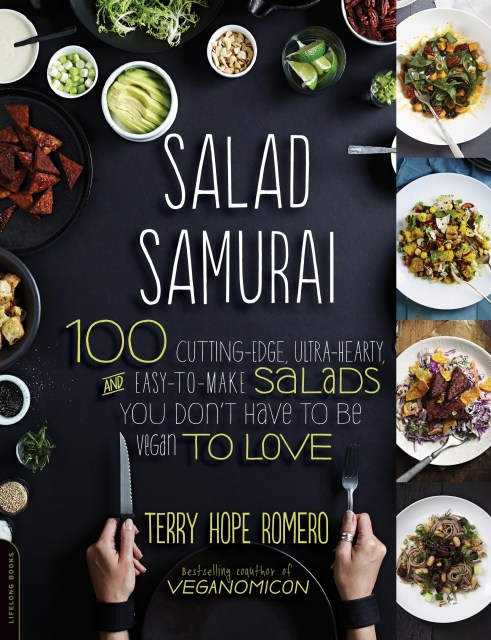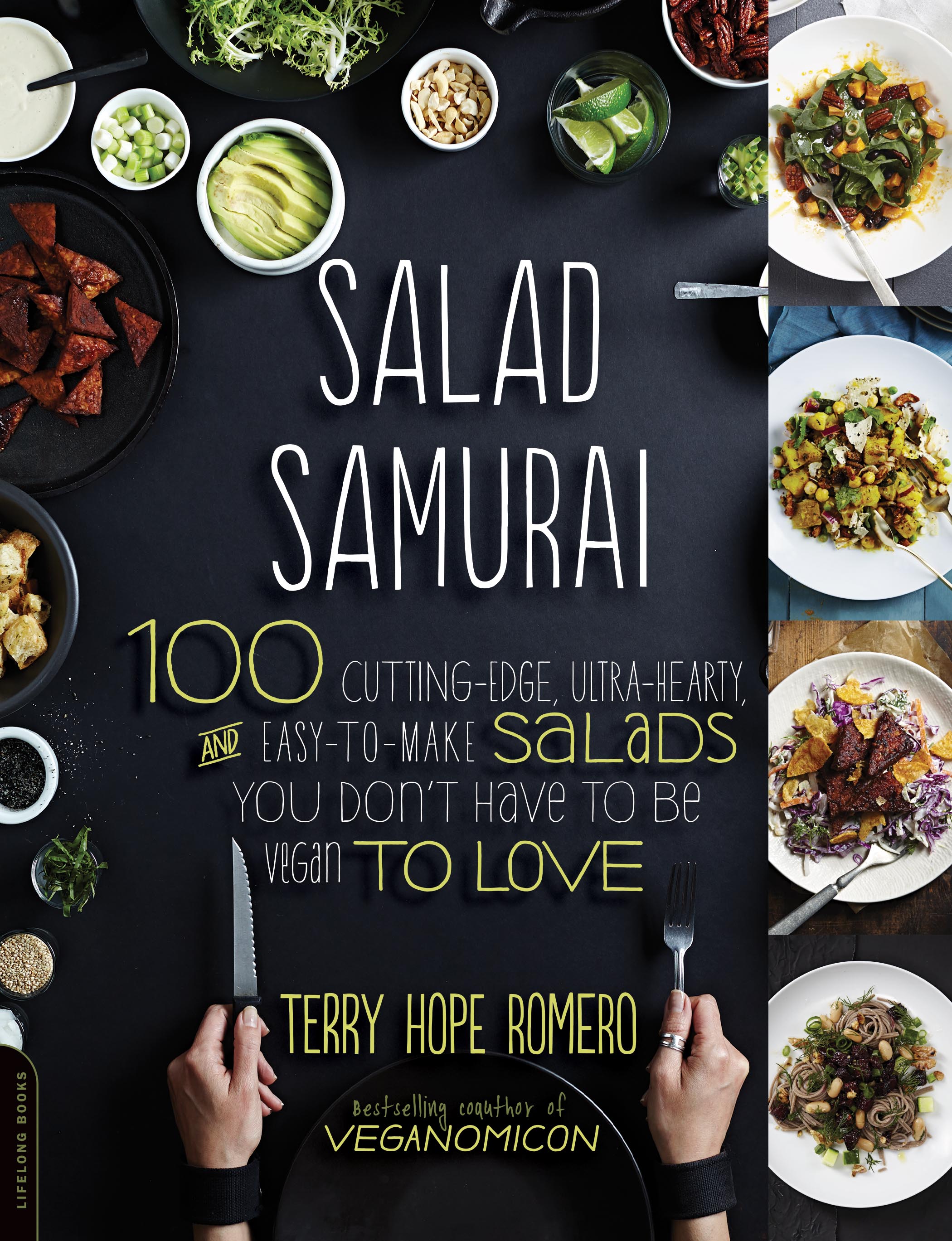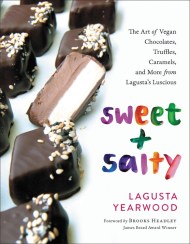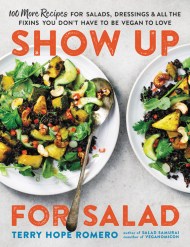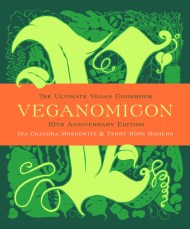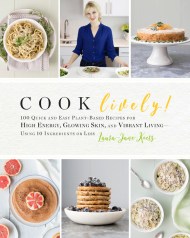Salad Samurai
100 Cutting-Edge, Ultra-Hearty, Easy-to-Make Salads You Don't Have to Be Vegan to Love
Contributors
Formats and Prices
Price
$12.99Price
$16.99 CADFormat
Format:
- ebook $12.99 $16.99 CAD
- Trade Paperback $19.99 $24.99 CAD
This item is a preorder. Your payment method will be charged immediately, and the product is expected to ship on or around June 17, 2014. This date is subject to change due to shipping delays beyond our control.
Also available from:
Coauthor of the bestselling vegan bible Veganomicon shares 100 recipes for main dish salads loaded with whole-food, high-protein, and seasonal ingredients
Life’s too short for sad salad. Award-winning chef and Veganomicon coauthor Terry Hope Romero teaches you the way of the veggie warrior, rescuing salads from their bland, boring reputation and “side” status. With more than 100 vibrant, filling entrees, Salad Samurai is your guide to real salad bushido: a hearty base, a zesty dressing, and loads of seriously tasty toppings. Using whole-food ingredients and seasonal produce, these versatile meatless, dairy-free dishes are organized by season for a full year of memorable meals (yes, salad can rock even the coldest days of winter). Dig in to:
- Spring Herb Salad with Maple Orange Tempeh
- Deviled Kale Caesar Salad
- Seared Garlic Chickpeas, Spinach, and Farro
- Seitan Steak Salad with Green Peppercorn Dressing
- Herbed Pea Ricotta, Tomatoes, and Basil
- Mushroom, Barley, and Brussels Harvest Bowl
- Tempeh Rubenesque Salad
- Pomegranate Quinoa Holiday Tabouli
- Seitan Bacon Wedge Salad
And many more!
Genre:
-
Milwaukee Journal-Sentinel, 7/2/14
“Terry Hope Romero has carved a name as a go-to for vegan recipes that you actually want to eat…Even the heartiest meat eaters may be tempted by the flavor-filled options in Romero's latest cookbook.”
Hudson Valley News, “Local Reader” column, 6/25/14
“Find basic favorites and a hundred other salads to tempt the summer palate and make you forget about meat.”
Bookviews blog, July 2014
“Did your mom tell you to eat your vegetables? Sure she did and now you can enjoy them…This book will have you eager to sample a world of salads you never knew existed.”
The Sweet Life, 7/1/14
“A stunning book…Filled with 100 hearty salads, a large variety of dressings, ‘seriously hearty' toppings, and even a chapter on sweet breakfast salads, this book covers everything you need to know…In this book you will find some of the most ingenious salads ever.”
SandAndSuccotash.com, 6/28/14
“There are a few reasons why I love Terry Romero's cookbooks: engaging text, downright delicious recipes, and the fact that you don't even have to be vegan to enjoy what she makes…There is fun for everyone.” -
Portland Oregonian, 8/7/14
“[A] collection of hearty entrée salads, featuring flavorful greens, an array of inventive toppings, and delicious, from-scratch dressings. While the recipes are all vegan, there's plenty here for non-vegans to love, especially if they're trying to incorporate more vegetables into their diet for health or sustainability. People with big appetites will love the generous portions, which can often be stretched into the next day's lunch. And Romero includes ‘Samurai Stylings' with many of her recipes, offering suggestions for substitutions that will keep things from becoming routine…Romero has a great voice, and her enthusiastic headnotes draw readers into the recipes.”
Hudson Valley News, 7/30/14
“A perfect gift book for the foodie on your list.”
Huffington Post, 8/25/14
“Romero rounds up a big world of fusion and flavors for 100 cutting-edge salads…Salad Samurai recipes are bold, but totally doable. Romero gives you the recipes as well as their individual components from spirited dressings to crunchy, cool toppings, so you can mix, match and tap into your own inner salad samurai.”
TableMatters.com, 8/25/14
“Hearty (and vegan) salads [that] go way beyond rabbit food.” -
San Francisco Book Review, 8/20/14
“If you're ready to take your salads to the next level, Terry Hope Romero offers all kinds of ideas in Salad Samurai…Along with a plethora of amazing and tempting recipes, Romero has also included a generous helping of the lively wit that her readers adore. Anyone familiar with her past cookbooks won't be surprised to learn that every recipe in Salad Samurai is vegan, but don't let that scare you away; there's a recipe in this book for everyone.”
Deseret News, 9/3/14
“Folks who have grown up on the salad as a side dish…may greet the recipes in Terry Hope Romero's Salad Samurai with something akin to wonder…Her creative salads are absolutely beautiful. But they are also filling and full of surprise, offering tastes that pop…Every salad is also fast and simple to prepare…This cookbook is bound to be a favorite.”
The Veracious Vegan, 9/3/14
“For just 12 on Amazon, I'd challenge you to find a nicer recipe book.”
Canada.com, 9/11/14
“The more than one hundred entrée salads that Romero shares in her new cookbook, Salad Samurai, span the seasons and prove that salads can be exciting.”
LA Weekly, 9/15/14
“Includes 100 recipes…that prove that salads are a lot more than what you have to eat before the real meal comes.” -
VegNews “15 Most Anticipated Vegan Cookbooks of 2014,” March 2014
A Portland Oregonian Top 5 Vegan Cookbook of 2014
VegNews.com, 3/3/14
“From one of the most popular vegan cookbook authors of our time comes a collection of perfectly tuned recipes that's long overdue…[and that] you don't have to be vegan to love.”
StyleBistro.com, 5/27/14
“It's packed with seasonal main-course salad recipes bursting with veggies, plant protein, flavor and color…There are salads for every season.”
Philadelphia Tribune, 6/13/14
“Romero is back with another cookbook and ready to help those with a plant-based diet clear their next cooking hurdle: entrée salads…She debunks the myth that salads are only an appetizer, using whole food ingredients and plant-based proteins that will appeal to vegans and non-vegans in equal measure…The 100 recipes in Salad Samurai are a great resource for anyone who wants to move to a more sustainable and healthy diet.”
Groupon.com, 6/12/14
“A compilation of 100 whole-meal salads for every season that are hearty enough to sate even the barbecue-loving crowd.” -
Entertainment Realm, 6/2/14
“[Romero] divides it by season making it super easy to pick what's fresh and available…Yummy, creative salads…Gorgeous pictures, excellent tips and simple instructions included…There's lots of vegan deliciousness in these pages.”
Portland Press Herald, 7/12/14
“Romero is a rock star of vegan cooking…In this book, she shakes up the staid world of salad with her cheeky writing and seasonally arranged salads.”
Washington Post, 7/23/14
“For salad inspiration, I can think of few sources better than the new cookbook Salad Samurai…Romero brings her fun-loving sensibility and unerring palate to the table. Her recipes, with their brilliant combinations, span the seasons.”
Epicurious.com, 7/24/14
“Its accessible main course salad recipes are anything but boring, with unexpected flavor combinations that make me wonder—hey, why didn't I think of that?”
Sexy Vegan, 7/22/14
“One of the many great things about this book is that there are chapters with just dressings, and just toppings, that you can use in countless other non-salad related situations…The book is enjoyable to read, with lots of informational material before you even get to the recipes.” -
EverydayHealth.com, 6/20/14
“Explains how to create a satisfying salad packed with hearty, plant-based proteins, robust spices, whole grains, and ripe toppings no matter the season. Give your pots and pans a break and take advantage of summer's bountiful crops to make these healthy, filling meals.”
Milwaukee Shepherd Express, 6/18/14
“Few of us have discovered as many ways as Romero of transforming salads from side dish to entrée.”
The Advocate, 7/7/14
“Debunks the myth that salads are only the warm-up act with 100 hearty salad recipes that just happen to be vegan.”
Examiner.com, 7/9/14
“A must for dedicated vegans, a good way to ease into salads for even the most stubborn meat lover, and a great resource for anyone who wants to move to a more sustainable, healthy diet.”
Squidoo.com, 7/11/14
“If you're into vegetarian or vegan food, or a foodie who loves awesome cookbooks and recipes presented with fun and flair, then you know the name Terry Hope Romero…This woman embodies just about everything that's right with vegan cooking.”
Asbury Park Press, 6/39/14
“These are big, hearty entrée salads that will leave eaters feeling a good kind of full.” -
Portland Book Review, 10/23/14
“Salad Samurai will make a salad lover out of even the pickiest eater…[An] incredible resource…Although this book is focused on the vegan eater, anyone will find something to love.”
San Francisco Book Review, 11/10/14
“An amazing book.”
Vegan Outreach, 11/19/14
“Exceptional.”
Portland Press Herald, 1/14/15
“Romero offers salads for every season, including inventive winter options when typical salad ingredients are scarce, and if you are on the lookout for new ways to prepare tempeh and tofu, the first chapter is great.”
Vegetarian Journal, March 2015
“Creative salad offerings…Color photos and helpful tips can be found throughout this book.”
FranCostigan.com, 12/10/14
“With designations for gluten-free and raw-ready options and recipes that are work-friendly, weeknight-ready, high-protein, and loaded with superfoods, Terry shows us the way of the salad: killer dishes that are satisfying, healthy, and scrumptious.” -
Curled Up With a Good Book, 9/20/14
“This colorful coffee table or kitchen counter style guide allows you to conquer the salad doldrums, experiment, and turn your palate back on to the salad station…In addition to offering salad dressing concoctions amazing in their variety, Romero has deftly divided her salad selections by season, which will help the truly dedicated farmer's market shopper…The book is graphically sharp and stylish; you will enjoy showing it off to your salad-loving guests…Salad Samurai was designed with veg devotees in mind, but it will be no surprise if it garners new converts to tofu and tarragon.”
Midwest Book Review, July 2014
“Salad Samurai will prove to be an invaluable, ‘kitchen cook friendly' addition to all personal, family, and community library cookbook collections…Beautifully illustrated throughout…Especially recommended for parents of children reluctant to eat a salad and for anyone trying to establish healthy eating habits.”
Inside Toronto, 9/30/14
“Shows you there is more to a salad than romaine lettuce and some tomatoes…Offers dishes perfect for spring, summer, fall and winter.”
T.O.F.U. Magazine, 10/10/14
“Approachable, simple, and delicious, Salad Samurai is an instant classic, and a necessary element to the Punk-at-Heart Kitchen.” -
"Full of complex, belly-filling, sometimes even show-stopping meals that happen to be salads. And vegan... Salad Samurai is something of a wonder."SeriousEats.com
-
"If you hunger for satisfying plant-based meals instead of demure side-dish salads, this book is for you!"Taste for Life
-
"Packed full of witty humour, gorgeous food photography and of course, delicious vegan recipes... Will definitely inspire you to stock up your salad drawer."The Vegetarian
-
"Flavor, texture, and visual appeal meld in delicious dishes... Romero hits a home run wit her newest cookbook, which offers a hundred recipes that can be mixed and matched to make countless meals that will make even the most reluctant a fan of salads... Romero is an expert with flavor and technique, but she shows restraint wit her gourmet prowess and provides recipes that even novices in the kitchen can execute... Will satisfy your taste buds and fill your tummy."Compassionate Action for Animals
-
"Full of recipes for sumptuous entree salads with amazing garnishes, Salad Samurai inspires produce-powered meals to please vegans and carnivores alike."Experience Life
- On Sale
- Jun 17, 2014
- Page Count
- 192 pages
- Publisher
- Da Capo Lifelong Books
- ISBN-13
- 9780738217529
Newsletter Signup
By clicking ‘Sign Up,’ I acknowledge that I have read and agree to Hachette Book Group’s Privacy Policy and Terms of Use
